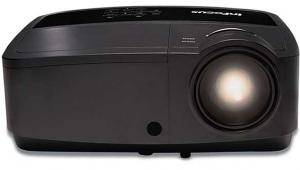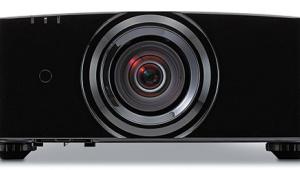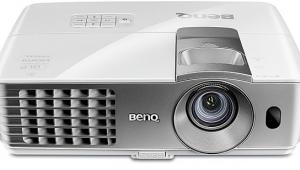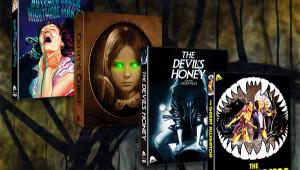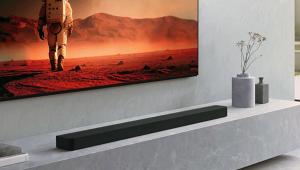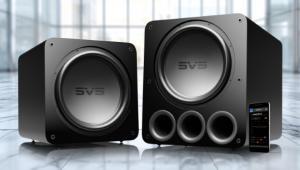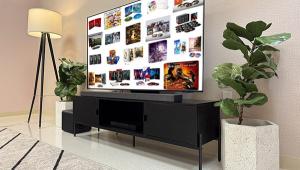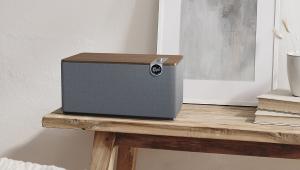BenQ W7000 3D DLP Projector Page 2
 While the W7000 provides a full color management system,
I was surprised that BenQ didn’t include any preset color modes. Instead, it appears that the company wanted to adhere to Rec. 709 as closely as possible right from the get-go. Right out of the box, the W7000 was pretty close to the standard but still had some room for improvement. Unfortunately, the CMS has some issues when it comes to dialing in the primaries. Luminance was easy enough to dial in, but when I tried to adjust either saturation or hue, I’d see a huge shift interaction between these controls. If you adjust saturation, hue goes way out, and vice versa. Through trial and error, however, I got a pretty solid calibration done that had little deviation from the Rec. 709 specification.
While the W7000 provides a full color management system,
I was surprised that BenQ didn’t include any preset color modes. Instead, it appears that the company wanted to adhere to Rec. 709 as closely as possible right from the get-go. Right out of the box, the W7000 was pretty close to the standard but still had some room for improvement. Unfortunately, the CMS has some issues when it comes to dialing in the primaries. Luminance was easy enough to dial in, but when I tried to adjust either saturation or hue, I’d see a huge shift interaction between these controls. If you adjust saturation, hue goes way out, and vice versa. Through trial and error, however, I got a pretty solid calibration done that had little deviation from the Rec. 709 specification.
The BenQ does have some gamma presets, but it doesn’t include either custom gamma settings or a way to tweak the preset you’ve selected. For the most part, the gamma tracking was pretty linear, but I found it was often slightly different than what the preset intended to deliver. With a 2.2 gamma selected, I would see closer to 2.1. With a 2.4, I would see closer to 2.3. Since this projector’s contrast performance is on the poor side (more on this below), I would suggest using the 2.2 gamma preset. The projector’s black floor just isn’t low enough to do a proper 2.3 to 2.4 gamma with- out black crush.
The W7000 features a few advanced video features, such as frame interpolation and support for an anamorphic lens. I’ve stated many times that I’m not a fan of motion interpolation, and the BenQ didn’t sell me on it any more than any of the other displays that use it. Even in the lowest setting, it provided an unnatural motion look that was more of a distraction than I could bear. I also saw noticeable artifacts around objects during pans and even some frame dropping. If you’re a fan of frame interpolation, the W7000 produced some noticeable issues with it on, even in the lowest setting.
The W7000 supports anamorphic lenses and has built-in presets for Panamorph systems. I don’t have a setup that allows me to test this feature, so I didn’t use it for this review.
Play Time
For this review, I set up the BenQ W7000 in my dedicated home theater room and projected it
onto a 120-inch-diagonal Stewart Filmscreen StudioTek 130 (1.3 gain) fixed screen. The player was connected to an Oppo BDP-95 Blu-ray player, Panasonic DMP-BDT220 Blu-ray player, and a DirecTV HD DVR, which were switched via an Anthem Statement D2V surround processor. All connections were made with AudioQuest and BetterCables interconnects. The projector was 14 feet back from the screen with the lens just slightly below the center of the screen.
Let’s just get this out of the way right now. DLP doesn’t cater to the contrast enthusiasts looking for the deepest blacks. In our experience, its contrast performance is typically on the low side, with blacks that lean toward dark gray at best. But DLP designs are often brighter and sharper than projectors based on other technologies, and they deliver impressive contrast in mixed images. I didn’t expect the BenQ to compete with the recent LCOS or SXRD projectors I’ve reviewed for black levels, but I knew it would give them more than a run for their money with brightness, sharpness, and 3D performance.
For 2D viewing, the BenQ’s biggest strengths are its light output and sharp imagery. Unfortunately, its contrast levels are pretty low. In fact, they’re lower than I would have expected, even for a Dark Chip 2 design. Once I got the W7000 calibrated, the best contrast level I could wrangle was about 1,800:1. That’s with the DynamicBlack auto iris turned on. When I turned off the auto iris, I got a measly 600:1, which is lower than any DLP I’ve ever measured. I’m not sure if this is an issue with the light path or iris implementation, but it definitely took its toll on black levels and image depth. Keep in mind, though: This is about the same contrast performance you see from D-Cinema DLP projectors at your local digital theater. So if you don’t have a problem with the contrast performance at your local Cineplex, the W7000’s shouldn’t bother you, either.

What you do get from the W7000 is an extremely bright and vivid image. Colors look won- derful, and the extra brightness lends to an eye-catching image that even impresses with some ambient light left on in the room. I almost wish BenQ would have included a manual iris option so I could dim the image down a bit and maybe get a little more contrast performance on the lower end. If you find the image too bright, you can always use a neutral density filter to dim it. This may also help out with the perception of blacks. BenQ’s W6000 had a manual iris you could access via the projector’s service menu, but I didn’t find any indication that this was the case with the W7000.
Motion resolution was excellent, and the W7000 did great with sports. With so much light to work with, colors had more pop than I was used to, even though they were calibrated to the same spec as my reference projector. Shadow detail was also excellent. While blacks weren’t nearly as deep as I would prefer, the overall level of black was only an issue with the darker material I threw at it. Movies like Aliens Vs Predator and The Dark Knight suffered the most, but most films don’t approach this level of gloom, so the black levels didn’t bother me as much as I thought they would.
Where the W7000 sets itself apart from the rest is 3D. Bar none, this is the best 3D I’ve seen in home theater to date. With lumens to spare, the BenQ delivered a bright, punchy 3D image that was completely devoid of the artifacts I so often see with any other display technology. It didn’t matter what 3D material I put on, I never once saw any distracting artifacts like strobing, ghosting, or flicker. This is the bar that other 3D projectors should strive for.
The BenQ has a specific 3D picture mode that automatically throws it into high lamp mode. You can still adjust its settings, though, and I found that my settings for 2D playback worked quite well. Colors looked natural, and contrast was pretty decent with even the darkest 3D material. I had the chance to use the BenQ for a couple of weeks and went through quite a bit of 3D material. Some recent standouts include the excellent 3D Blu-ray releases of Kung Fu Panda 2, IMAX: Hubble, and Hugo.
Kung Fu Panda 2 provided some of the most beautiful imagery I saw on the W7000. DreamWorks Animation pulled no punches with this one. Colors were dazzling, and the amount of fine detail on display was breathtaking. I was afraid the W7000’s low-contrast performance would hurt image depth, but thankfully that just wasn’t the case. Blacks looked respectable, and the image maintained plenty of depth and dimension. The same can be said for Warner’s release of IMAX: Hubble, which features some incredible imagery taken from the Hubble Telescope.
But the most impressive images were from Paramount’s release of Hugo. Next to Avatar, this is the best 3D I’ve seen from a motion picture. Its use of depth in this film is second to none. Few films even come close to selling me on 3D, but this is a film that I would actually have trouble watching in 2D given how well they executed the 3D effects. The W7000 provided a bright, punchy 3D image that made the best of the interesting color work Scorsese employed and the wonderful infinite sense of depth the film provides. 3D has never looked this good in my home before.
Conclusion
After spending some time with the BenQ W7000, I found myself bummed that we don’t give as much attention to the DLP projection market anymore. The BenQ delivered the best 3D experience I’ve had in my home, while coming up a bit short with 2D material as a consequence of its weak contrast. Obviously, I’ve become a bit spoiled with the blacks my reference JVC projector provides, so ultimately the 2D experience will depend on how picky you are about contrast and black levels. I think a bit more spit and polish could go a long way in this department, as we’ve seen DLP designs—including older ones from BenQ—that delivered far better black levels. But if you’re seeking out a bright projector with superb 3D performance and sharp images, this is one that should be on your short list. I don’t think you’ll find a better 3D image anywhere near this price.


